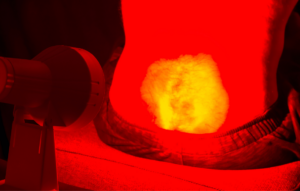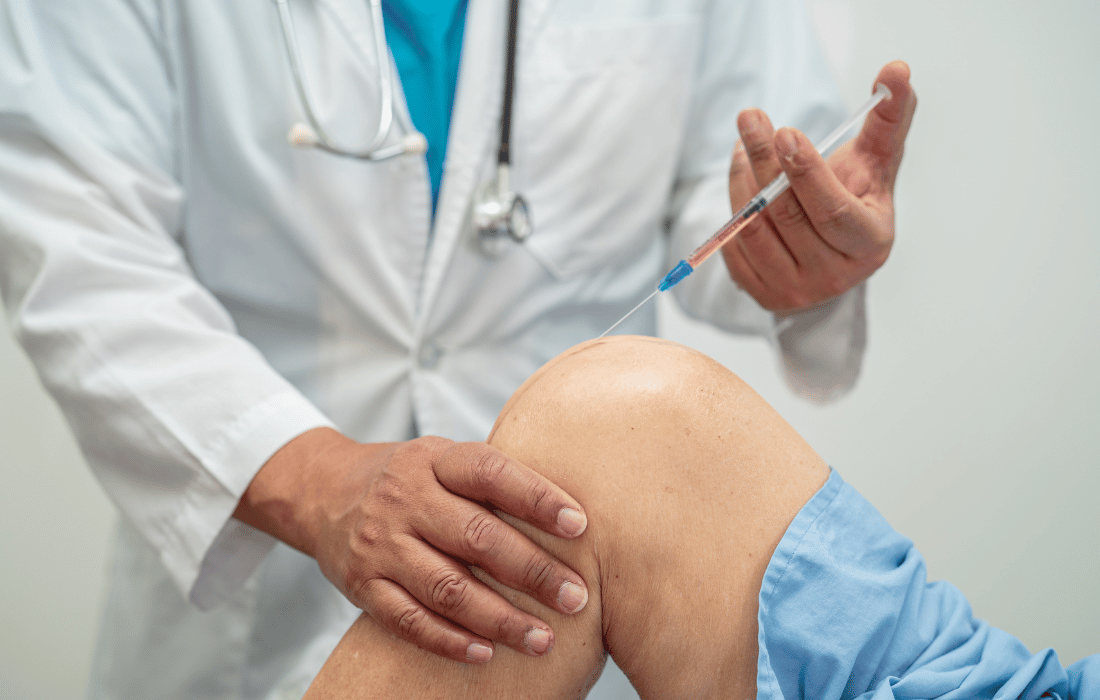It’s not just about rest, ice, and surgery. Today’s elite athletes are employing a multifaceted, holistic approach to recovery that blends cutting-edge technology with natural methods. Their healing regimens are as intense and varied as their training routines, involving everything from cold plunges and red light therapy to IV drips and high-protein diets. Below, we’ll explore the modern athlete’s playbook for injury recovery and how these methods can be adopted by anyone seeking to enhance their own healing process.
Physical Therapy: Rewiring the Body’s Mechanics
Physical therapy (PT) is the cornerstone of injury recovery for athletes. But this isn’t your run-of-the-mill PT. Independent sports athletes don’t just want to recover; they need to perform at an elite level again. Their therapy regimens include neural activation, biomechanical retraining, and mobility work designed to reprogram the brain’s relationship with injured muscles and joints.
For example, Ryan Villopoto, one of the most decorated motocross riders, suffered multiple fractures and required extensive rehabilitation. His therapy wasn’t just about healing bones—it was about retraining his body to handle the extreme forces of high-speed riding again. His therapy included neuromuscular retraining, helping his body respond instinctively to the dynamic movements of motocross, minimizing future risk, and enhancing his performance.
Foam Rolling and Mobility Training
Foam rolling has become a staple in most athletes’ post-injury and recovery programs. By promoting myofascial release, it helps reduce muscle stiffness and soreness, speeds up recovery, and improves range of motion. Combined with mobility training, which includes targeted stretches and joint mobility exercises, foam rolling can significantly enhance flexibility and reduce the risk of re-injury.
Athletes like MMA fighters incorporate these techniques to increase their functional mobility, allowing them to return to peak fighting conditions after ligament tears, shoulder dislocations, and other common injuries in combat sports.
Cold Plunge and Sauna: The Dynamic Duo for Inflammation Control
Contrast therapy—alternating between cold plunges and sauna sessions—has become a recovery ritual for many top athletes. The cold plunge, with temperatures often dropping below 50°F, constricts blood vessels and reduces inflammation in overworked muscles and joints. The sauna, on the other hand, dilates those blood vessels, promoting circulation, flushing out toxins, and encouraging cellular repair.
This combination of intense heat and cold helps stimulate the body’s natural healing mechanisms. For example, combat sports legends like Sean O’Malley use cold plunges after fights to reduce swelling and promote faster recovery from microtears in the muscles. On the flip side, sauna sessions help athletes detox and speed up muscle repair by promoting better blood flow to injured areas.
Hyperbaric Oxygen Therapy (HBOT): Accelerating Recovery with Oxygen
Hyperbaric Oxygen Therapy (HBOT) is a powerful recovery tool that has gained traction among top athletes for its ability to speed up healing after serious injuries. This treatment involves breathing pure oxygen in a pressurized chamber, allowing the body to absorb oxygen at levels much higher than normal. The increased oxygen helps tissues repair faster, reduces inflammation, and promotes the regeneration of damaged cells.
For athletes recovering from fractures, ligament tears, or even concussions, HBOT can be a game-changer. Oxygen is essential for every cellular process in the body, and when there’s more of it available, the body can repair tissues more effectively. It also boosts the production of stem cells and accelerates the removal of toxins and waste products from injured areas.
IV Therapy: Nutrient Infusion for Optimal Healing
After a grueling injury, the body needs all the help it can get to recover, and one way to fast-track this process is through intravenous (IV) therapy. IV therapy allows athletes to receive high doses of vitamins, minerals, and antioxidants directly into the bloodstream, bypassing the digestive system for immediate absorption. This treatment replenishes essential nutrients that are often depleted after injury or surgery, boosting the immune system and accelerating the healing process.
Many athletes choose custom blends of IV therapy that include B vitamins, magnesium, vitamin C, and glutathione, a potent antioxidant that helps fight inflammation and oxidative stress. After a physically draining injury, an athlete’s nutrient reserves are low, and IV therapy helps them recover faster by delivering exactly what their body needs for cellular repair and energy restoration.
Grounding: Reconnecting with the Earth for Faster Recovery
Grounding, or earthing, is the simple practice of physically connecting with the Earth by walking barefoot on natural surfaces like grass or sand. While it may sound like pseudoscience to some, there’s growing evidence that grounding can reduce inflammation, improve sleep, and speed up recovery. Athletes are increasingly embracing grounding as part of their healing process, especially those who are aware of how excess electromagnetic fields (EMFs) can disrupt the body’s natural balance.
The idea is that the Earth carries a natural negative charge, which can help neutralize the body’s positive charge—a charge that can accumulate from exposure to electronics and EMFs. Fighters like Sean O’Malley, who frequently practice grounding as part of their recovery, report reduced inflammation, improved mental clarity, and faster muscle recovery after intense fights or training sessions.
Red Light Therapy: Healing at the Cellular Level
 Red light therapy (RLT) has made its way into the recovery routines of many top athletes for its ability to heal from the inside out. This therapy uses low-level wavelengths of light to penetrate deep into the skin, promoting tissue repair, reducing inflammation, and boosting cellular function. Red light is especially useful for treating soft tissue injuries like muscle strains, tendinitis, and ligament tears—common injuries in extreme sports.
Red light therapy (RLT) has made its way into the recovery routines of many top athletes for its ability to heal from the inside out. This therapy uses low-level wavelengths of light to penetrate deep into the skin, promoting tissue repair, reducing inflammation, and boosting cellular function. Red light is especially useful for treating soft tissue injuries like muscle strains, tendinitis, and ligament tears—common injuries in extreme sports.
Athletes such as UFC fighters and BMX riders who suffer frequent joint and muscle injuries use red light therapy to reduce downtime. By promoting faster healing at the cellular level, they can accelerate recovery from injury and get back to training sooner than they would with conventional treatments alone.
The Role of Animal Protein and Fats in Tissue Repair
Diet plays a crucial role in recovery, and for independent sports athletes, a diet rich in animal protein and fats is often the secret weapon. After a major injury, the body needs the building blocks to rebuild muscle, repair tissues, and reduce inflammation. High-quality animal proteins—like those found in grass-fed beef, pasture-raised eggs, and wild-caught fish—are loaded with essential amino acids like leucine and glutamine, which are critical for muscle repair.
Fats from sources like grass-fed butter and raw milk are also rich in omega-3 fatty acids, which have powerful anti-inflammatory properties that help heal tissues and joints. Athletes who follow an animal-based diet recover more quickly and perform at a higher level because their bodies are getting the most nutrient-dense foods to support healing.
EMF Protection: Safeguarding the Nervous System for Optimal Recovery

Electromagnetic fields (EMFs) are a growing concern for athletes, especially those constantly surrounded by electronics, whether through training devices, smartphones, or travel. Many independent sports athletes are now incorporating EMF protection into their recovery routines, using tools like Aires Tech devices to reduce exposure and safeguard their nervous systems.
EMFs can disrupt cellular communication and increase inflammation, both of which slow down the body’s natural recovery process. By incorporating EMF protection from Aires Tech, athletes like motocross riders and MMA fighters protect their bodies from the harmful effects of constant electronic exposure, allowing their nervous systems to function optimally during the recovery process.
Hydration and Electrolytes: The Overlooked Keys to Recovery
It’s easy to overlook hydration when discussing recovery, but proper hydration is the foundation of every successful healing process. Top athletes know that staying hydrated isn’t just about drinking water—it’s about maintaining a proper balance of electrolytes, including sodium, potassium, and magnesium. These minerals are essential for muscle function, joint lubrication, and overall cellular health.
High-quality electrolyte supplements like Jigsaw Health’s Adrenal Cocktail are popular among athletes recovering from injuries. These drinks provide the necessary balance of minerals to prevent dehydration, reduce muscle cramps, and promote faster recovery. Whether they’re recovering from a fight or a broken bone, athletes who focus on proper hydration recover faster and with fewer complications.
Massage Therapy and Myofascial Release: Breaking Down Scar Tissue
Massage therapy is a staple in many athletes’ recovery programs, especially those dealing with scar tissue from surgeries or chronic muscle tightness. Techniques like deep tissue massage and myofascial release help break down adhesions, reduce stiffness, and improve blood flow to the injured area, promoting faster healing.
For athletes like motocross riders who suffer from shoulder dislocations or knee injuries, massage therapy can be a game-changer in their recovery process. By releasing tight muscles and breaking up scar tissue, massage therapy ensures that the injured area heals properly without being compromised by adhesions, which can limit the range of motion and lead to future injuries.
Many independent sports athletes use a combination of massage techniques, from deep tissue massage to trigger point therapy, to promote long-term recovery. These therapies help increase blood flow to damaged tissues, reduce inflammation, and encourage faster healing. For athletes like motocross riders who are constantly battling overuse injuries, massage therapy helps maintain their physical health over the long haul.
Stem Cells: Revolutionizing Recovery
Stem cell therapy represents one of the most exciting advances in injury recovery for athletes. Stem cells are undifferentiated cells with the potential to develop into various cell types, and when injected into an injured area, they can promote tissue regeneration and reduce inflammation. This therapy has been particularly successful for athletes dealing with cartilage damage, tendon tears, and even spinal injuries—areas where traditional medicine often falls short.
Athletes like extreme sports legend Travis Pastrana have turned to stem cell therapy after experiencing severe injuries. Pastrana, who has endured more broken bones than most people could count, has used stem cell injections to repair damaged joints and tissues, allowing him to continue performing at a high level. Stem cell therapy has also been popular among combat sports athletes who need to recover from serious injuries like torn ligaments and cartilage damage.
Sunlight and Time in Nature: Holistic Healing from the Outside In
Athletes know that recovery isn’t just about repairing the body—it’s also about repairing the mind. Spending time outdoors, whether it’s hiking in the mountains, walking barefoot on the beach, or soaking up natural sunlight, can have profound effects on both mental and physical health. Sunlight exposure boosts vitamin D production, which is essential for bone health and immune function, while the calming effects of nature reduce stress hormones like cortisol, which can interfere with the body’s healing process.
Top athletes, particularly those in extreme and independent sports, recognize the importance of mental recovery as part of their physical healing. Time in nature, combined with sunlight exposure, allows their bodies to rest, recover, and recharge in a natural environment that promotes holistic healing.
Conclusion: The Power of Body Resilience
In the world of independent sports, where injury is inevitable, these athletes have discovered that true recovery requires more than just taking a rest day. It demands a deep understanding of the body’s innate capacity to heal when given the right tools—whether that’s high-quality animal protein, time in nature, or cutting-edge therapies like red light and stem cells.
The next time you face an injury or physical setback, take a page from their playbook. Embrace a multifaceted recovery strategy that addresses not just the injury, but the whole body, mind, and spirit. Because resilience isn’t just about bouncing back—it’s about rising above.







